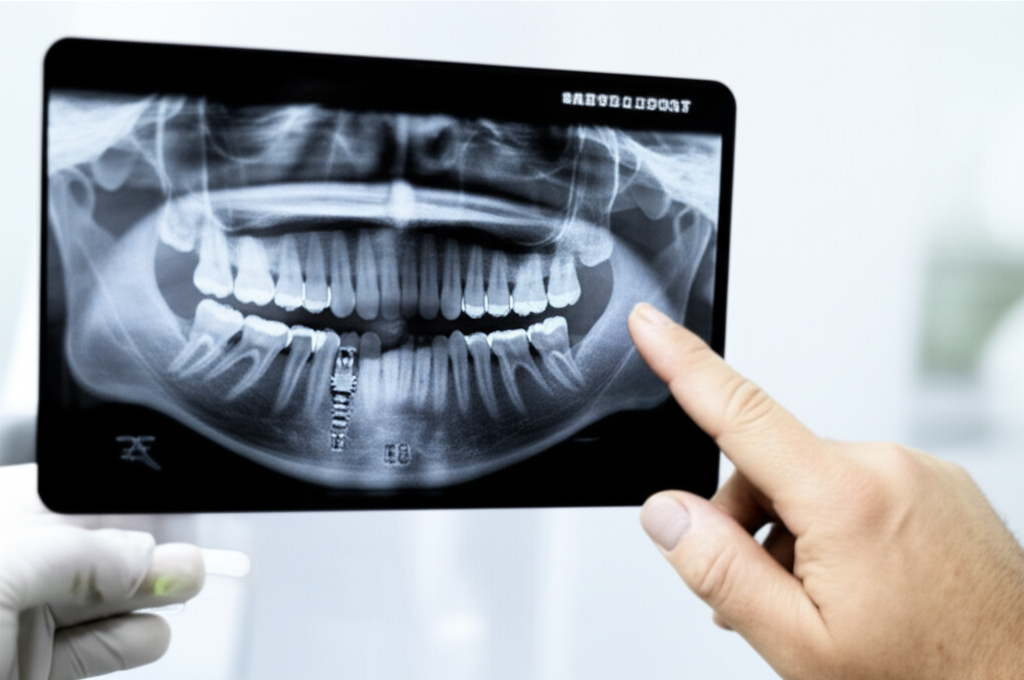
How Many Visits for a Dental Implant? My Complete Guide to the Process
Table of Contents
- Visit 1: The Initial Consultation and Planning
- Visit 2: Surgical Placement of the Implant
- The Healing Period: A Waiting Game
- Visit 3 (or 3/4): Placing the Abutment
- Visit 4 (or 4/5): Impressions and the Final Crown
- Visit 5: Follow-Ups and Long-Term Maintenance
- Bone Grafting: Giving Your Jawbone a Boost
- Tooth Extractions and Immediate Implants
- Multiple Implants or Full-Arch Solutions
- Complications or Revisions: When Things Don’t Go Smoothly
Article Outline Overview
Here’s a quick look at what I’ll cover to help you understand the dental implant process:
- A straight answer to “how many visits?”
- A simple breakdown of each step for a dental implant.
- Some common reasons you may need more visits (like bone grafts, pulling teeth, etc.).
- A down-to-earth timeline based on my own experience.
- What each visit is really like.
- Tips I wish I knew sooner.
- Easy-to-understand answers for your biggest questions.
Introduction: My Personal Dental Implant Journey
If you’re ever found yourself asking, “How many times will I have to come back to the dentist for an implant?”—I get it. Before I started on my own, all I wanted to know was how many appointments would be needed, what would really happen at each, and how long it would all take.
I can tell you from first-hand experience, a dental implant isn’t a “one trip and done” deal. Think of it as a little project, with a few steps, a bit of waiting, and a big reward at the end. I’ll share what I learned: how many visits it took, what surprised me, and tips for handling each part.
How Many Visits Does a Dental Implant Really Take?
Let’s give you the answer right away: for a simple, single dental implant and no problems along the way, you’ll probably need 3 to 5 visits across a few months.
But sometimes it isn’t that simple. If you need extra treatments, like a bone graft, or pulling a tooth, you might need 6, 7, or even more appointments. In some cases steps can be done together, but a lot of the time you just have to go at your body’s pace.
My oral surgeon told me it’s “kind of like a road trip” — some folks get a straight drive, others have a few pit stops, but in the end, you’ll still get where you need to go. Let’s walk through the process together.
Stage by Stage: The Typical Dental Implant Process
Visit 1: The Initial Consultation and Planning
This is where it all started for me. At my first visit, the dentist:
- Took good x-rays and sometimes a 3D scan of my mouth.
- Checked if my jaw bone and gums were healthy enough.
- Asked about my health and past dental work (lots of questions!).
- Talked with me about the different options, good and bad.
- Made a plan just for me.
Looking back, this visit is so important. It wasn’t just another checkup—it was the plan for everything. I left with all the details written out and feeling a bit nervous (but excited too).
Visit 2: Surgical Placement of the Implant
Next up was surgery day. I was nervous, but the people there were calm and helpful. Here’s what went on:
- I got numbed (I didn’t feel pain, only a bit of pressure).
- The dentist made a small cut and put the titanium implant post in my jaw.
- I got some stitches.
- I was given a list of things to do (and not do) to heal.
This visit took about one to three hours. If you’re worried, don’t stress—the biggest part is in the dentist’s chair, and after a day or so most people (me included) are back to regular life.
The Healing Period: A Waiting Game
Now comes the part called Osseointegration. That just means your jawbone needs time (usually 3 to 6 months) to grow around the new implant and make it strong. You usually don’t need a checkup during this part (unless your dentist wants to take a look).
In the meantime, I wore a fake tooth to fill the gap. It wasn’t perfect or pretty, but it helped.
Visit 3 (or 3/4): Placing the Abutment
Once the implant had healed and my dentist gave the green light, it was time for the abutment. This is the little part that will hold the new tooth. Sometimes it goes on during the first surgery, but for me, it was a separate visit:
- Area was numbed, and the dentist uncovered the top of the implant.
- They screwed on the abutment.
- My gums needed a week or two to heal.
Note: Some people don’t have to come in for a separate abutment visit—depends on your dentist and the parts they use.
Visit 4 (or 4/5): Impressions and the Final Crown
Almost finished! At this appointment:
- They took careful molds (or digital scans) of my mouth with the abutment.
- Picked a color and shape to match my old teeth.
- Sent everything to a crown and bridge lab or digital dental lab for making the crown.
- I came back a week or two later. That’s when the dentist put on the finished tooth and made sure my bite was right.
It felt so good to see my tooth back in the mirror!
Visit 5: Follow-Ups and Long-Term Maintenance
Once the implant is in and you’re using it, you’ll still see your dentist for a follow-up to make sure everything is okay: how it feels, how you’re biting, and how your gums look. After that, just keep up with regular cleanings about twice a year.
These checkups are important—they help your new tooth stay strong for a long time.
Factors That Can Add More Visits to the Process
My five visits were pretty normal, but sometimes you’ll need a few more. Don’t panic—if your dentist asks for extra visits, it’s only to help you heal or make sure things stay on track.
Bone Grafting: Giving Your Jawbone a Boost
Not everybody needs this, but if your bone is too thin or soft, your dentist might say you need a bone graft. If you do:
- You may need one more appointment to check your jaw in detail.
- The bone graft itself is another small surgery.
- You might need 3-9 months of extra healing before the main implant goes in.
- After all this, you’ll finally get to start the regular implant steps.
So it can add a few more appointments and waiting time, but it gives your new tooth a good strong base.
Tooth Extractions and Immediate Implants
If your dentist needs to take out an old tooth first, that’s another visit. Sometimes, if things look healthy, you can get the implant right away when the tooth comes out (all in one visit). But if the area needs to heal, you’ll have a gap for a few weeks or months before the implant can go in.
Multiple Implants or Full-Arch Solutions
Getting more than one new tooth? Full-mouth options like All-on-4 mean more planning.
- Extra checkups and talks with your dentist or the digital dental lab for planning.
- More scans and molds.
- Fittings for bigger bridges or dentures.
- A few follow-ups as your new smile settles in.
If this is your case, be ready for maybe 7 or 8 visits.
Complications or Revisions: When Things Don’t Go Smoothly
It doesn’t happen all the time, but sometimes the healing takes longer, there’s a sore spot, or something needs to be adjusted. That just means a few extra visits are needed. It happened to a friend of mine, but her dentist fixed the problem right away. Good communication helps!
Timeline: How Long Does the Whole Thing Take?
Here’s something I wish I knew before I started: Getting a dental implant can take anywhere from a few months up to a year.
If it’s simple:
- 3-6 months from start to finish.
- 5-8+ months if you need bone grafting, longer healing, or more than one tooth.
It really does depend on how you heal. Don’t rush your body!
What to Expect at Each Visit: My Honest Walkthrough
Here’s what every step really felt like (just sharing my personal take):
Consult & Planning: Easy! Just answering questions and hearing about options. If you’re nervous, write down questions to ask.
Surgery: Not fun, but not as scary as it sounds. Numbing works well. Mostly weird pressure and sounds. I was sore after, but felt better within a couple days.
Healing: The waiting is the hardest part—not painful, just boring. Follow all your care instructions.
Abutment/Crown Fitting: Some discomfort, but nothing major. Biting into the little trays for impressions is quick and painless.
Long-Term: Just normal dentist checkups and cleanings—nothing extra.
Tips I Wish I Knew Before Starting Dental Implants
- Ask about all crown types. Sometimes a zirconia lab or emax dental lab can make the final tooth look even nicer.
- Take care of your mouth. Brush, floss, and get regular cleanings—treat your new tooth like it’s real.
- Plan for both time and money. The more visits you need, the more it may cost. The result is usually worth it, though.
- Mark your calendar. Missing a visit can slow things down.
- Be patient. There will be waiting, but you’ll be glad you stuck with it.
Is the Multi-Visit Dental Implant Process Worth It?
Honestly—yes! Having a strong, stable tooth again made it worth every appointment, day on the calendar, and all my patience. Dental implants can easily last you 20 years or more if you look after them.
If you want to check out other options, you can talk to your dentist about bridges or dentures, but implants just feel more like a real tooth.
Frequently Asked Questions About Dental Implant Visits
Can I cut down the number of visits?
Sometimes doctors can combine steps, like pulling a tooth and placing the implant in the same visit. But don’t rush if your mouth needs time to heal.
How long does each visit take?
Most are 30-90 minutes. Surgery days can go up to three hours if you’re getting more than one tooth at once.
Can a digital dental lab make it faster?
Digital scans and 3D pictures can help get your crown ready sooner, and make sure it fits nicely.
What if I miss an appointment?
Call your dentist soon to reschedule. Missing a healing check or delaying your final tooth can cause problems later.
How do implants compare to other choices?
Implants take more time and trips than bridges or dentures, but you get better chewing, more comfort, and save your jawbone for the future.
Conclusion: Planning Your Dental Implant Journey With Confidence
To sum up: Most people will need around three to five visits for one dental implant, but sometimes it’s more. If you need a bone graft, tooth pulled, or a full-mouth fix, there will be more stops along the way, but that’s okay.
Stay in touch with your dentist, ask questions whenever you need, and remember—this is an investment in your smile. Book a checkup and get your own plan! Every visit will take you that much closer to being able to smile with confidence.
You’ve got this!








